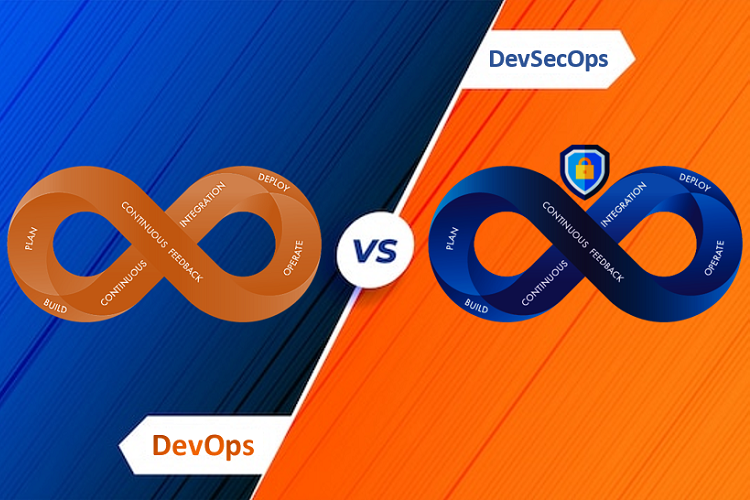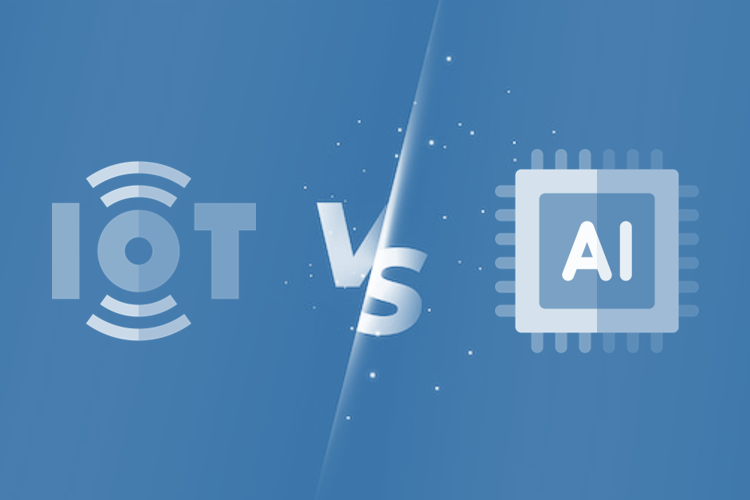Software is being developed faster than ever. This creates a dilemma – how can companies release quickly while keeping products secure and high quality? Two solutions have emerged – DevOps and DevSecOps. But how are they different? DevOps prioritizes speed. DevSecOps focuses on building in security from the start.
This post explores the core ideas behind each approach. It looks at their principles, tools and benefits. The goal is to understand their key contrasts. This will help your organization choose the right model. Your choice depends on your risks and needs. The payoff for picking correctly is huge – better protection, quality and customer trust. By grasping the differences, you can balance speed and security.
What is DevOps?
DevOps represents a combination of software development (Dev) and IT operations (Ops). It’s a set of practices aimed at faster and more reliable processes for delivering software innovation.
The key principles of DevOps include:
Collaboration
DevOps breaks down traditional silos between development and operations teams. Instead of working in isolation, these groups communicate and collaborate closely across the entire application lifecycle. Shared goals, tools, and practices unite them around speed, quality, and predictability.
Integration
Within a DevOps model, operations involved in building, testing, and releasing software become tightly aligned. Deployments, automated testing, infrastructure changes, and monitoring are integrated into shared processes.
Automation
Manual, repetitive tasks are replaced with automated workflows for the build, test, and deployment phases. Tests execute in parallel, configurations are automated, and releases happen with one-click simplicity.
Measurement
Key metrics like lead time, deploy frequency, time to restore service, and change failure rate are monitored to understand performance. Telemetry data provides visibility at every stage.
Continuous Improvement
Measurements are used to tune and optimize processes through experimentation and feedback loops. Small changes are made iteratively to incrementally improve flow.
DevOps aims to increase the speed, quality, and predictability of software delivery. Adopting DevOps can provide organizations with a number of benefits:
- Faster time-to-market for features and products
- Improved customer satisfaction through more rapid delivery of enhancements
- Increased productivity and efficiency of engineering teams
- Higher product and release quality with lower failure rates
- Improved communication, collaboration, and transparency between teams
- Greater resiliency and stability of software changes
- The ability to react quicker to technology shifts and competitors
By adopting a DevOps culture, companies like Netflix, Amazon, and Google have demonstrated the ability to thrive based on their software delivery capabilities. With the right buy-in, practices, and automation, DevOps can help organizations accelerate innovation for a competitive edge.
What is DevSecOps?
DevSecOps expands upon DevOps practices by baking security into the entire lifecycle of software delivery. It focuses on deeply integrating security across all phases, from initial design through production deployment.
The goals of DevSecOps include:
Security by design
Rather than an afterthought, security is built into software starting from initial design stages. Threat modeling, abuse cases, and risk analysis inform architecture and features.
Automated security testing
Static, dynamic, and software composition analysis security testing tools are integrated into CI/CD pipelines to find vulnerabilities and misconfigurations early.
Fast and secure releases
Automation allows teams to rapidly deliver software changes without sacrificing security or compliance controls.
Cross-team collaboration
Security teams work closely with developers, operations staff, and business owners throughout the process rather than only at the end.
Runtime protection
Production systems are instrumented to detect, alert, and block attempted attacks or anomalous behaviors.
Infrastructure as code
Applying configuration as code and infrastructure as code principles enables repeatable, secure infrastructure across environments.
Shared security responsibility
All members across the software delivery lifecycle own security rather than just a separate security team.
With DevSecOps, security becomes involved earlier to provide guidance and oversight by default rather than act as a roadblock closer to production. Security teams work together with development and operations to provide:
- Secure configurations and infrastructure templates
- Scanning and testing of code repositories and artifacts
- Review of architecture designs, planned features, and roadmaps
- Static analysis, dynamic analysis, and dependency analysis within pipelines
- Monitoring of production systems for vulnerabilities and threats
The goal is to “shift security left” as much as possible. While increased velocity and innovation are important, DevSecOps ensures the necessary controls, testing, and protections are built-in by default rather than an afterthought. Adopting DevSecOps allows balancing both agility and security appropriately for an organization’s needs.
Quick Comaprision Between DevOps and DevSecOps
| DevOps | DevSecOps | |
|---|---|---|
| Advantages |
|
|
| Implementation |
|
|
| Challenges |
|
|
Benefits of DevSecOps
Implementing a DevSecOps model can provide organizations with several advantages:
Improved security posture
Shifting security left and integrating it throughout the lifecycle results in more secure code, configurations, and infrastructure architecture. Issues can be detected and remediated earlier.
Reduced risk
Finding and fixing flaws during development and testing lowers risk of vulnerabilities making it to production where they can be exploited.
Faster response to threats
Embedded runtime protections and production monitoring allow rapid detection and remediation of any incidents.
Higher efficiency
Automated security testing is more efficient compared to manual reviews and penetration testing after the code is complete.
Greater innovation velocity
Developers can build features faster by collaborating with security teams earlier for reviews rather than waiting to be assessed later.
Enhanced compliance
Baking in compliance checks and controls upfront improves audit preparedness rather than scramble pre-audit.
Improved customer trust
High-profile breaches erode consumer confidence. A robust security posture maintained through DevSecOps boosts customer loyalty.
Lower costs
Reducing exploited vulnerabilities and data breaches saves on significant recovery costs, legal liabilities, and reputational damage.
Unified teams
Shared tools, practices, and responsibilities around security bring teams together around a common mission rather than work at cross purposes.
More robust cloud usage
Automated security helps utilize the advantages of cloud platforms while guarding against misconfigurations that increase risk.
Risk quantification
Measurable security criteria and testing provide objective ways to quantify and demonstrate risk reduction over time.
While DevOps offers speed advantages, DevSecOps seeks to deliver those benefits without compromising robust security built-in by design. Wise organizations make security a priority, not an afterthought.
DevOps and DevSecOps: Key Differences
While DevOps and DevSecOps share some fundamental attributes like collaboration, automation, and a focus on quality, there are some important distinctions between the two approaches.
Primary Focus
The core focus of DevOps is improving speed to market, increasing release velocity, and fostering closer collaboration between development and IT operations teams. Security has not traditionally been a central consideration.
In contrast, DevSecOps promotes deeply integrating security across the entire lifecycle. It expands collaboration to fully include security teams with a goal of building in protections by default rather than attempting to bolt them on later.
Role of Security
In a DevOps model, security is often seen as a separate function. Security testing happens later in the cycle before production deployment. Security teams have separate processes and priorities from development velocity.
DevSecOps treats security as an integral part of delivery from the beginning. Automated security testing runs in parallel via pipelines. Vulnerabilities can be addressed proactively rather than reactively.
Release Velocity
With its emphasis on speed, DevOps can end up prioritizing new features and capabilities to market even if vulnerabilities are detected later before production. Protections may be sacrificed for velocity.
DevSecOps aims to balance velocity with security. New protections may gate releases to ensure risks are addressed appropriately before software reaches users.
Mindset
The mindset of DevOps focuses on agility, collaboration between developers and IT operators, and accelerating release cycles. Security is a secondary concern.
DevSecOps requires a shift left in thinking to treat security as a first-class concern equal to new features and speed. Everyone adopts shared responsibility for protection.
Testing
In DevOps environments, testing priorities center on functionality, reliability, and performance. Some security scanning may happen, but isn’t a priority.
DevSecOps deeply integrates automated security testing for vulnerabilities, misconfigurations, weaknesses, and compliance into pipelines by default.
Monitoring
DevOps monitoring focuses on availability, traffic, system performance and errors. Production security monitoring is minimal.
DevSecOps also continuously monitors all systems and traffic for anomalies, attempted attacks, vulnerabilities, and exploits in order to respond quickly.
Collaboration
Both DevOps and DevSecOps place a strong emphasis on breaking down silos and fostering collaboration between teams involved in software delivery. However, there are some key differences in how that collaboration manifests.
In DevOps, the main focus is promoting better collaboration between development and IT operations teams who have traditionally worked separately. Developers may toss application code over the wall to ops teams who then deploy it. This separation of duties can create bottlenecks.
By adopting DevOps, developers start to think about operational concerns like monitoring, deployment patterns, infrastructure-as-code, and reliability engineering. Meanwhile, ops teams engage further with developers by providing self-service access to infrastructure, implementing CI/CD pipelines, and automating provisioning and configuration.
Shared tools, practices, and constant communication help bring dev and ops together around common goals. Both sides provide expertise to accelerate building, testing, and running software in production.
DevSecOps expands collaboration to fully include security teams throughout the entire process. Rather than be at odds with development velocity, security works closely with dev and ops to act as an enabler.
In a DevSecOps model, security takes part in:
- Reviewing requirements and designs to advise on risks or issues
- Providing templates for secure configurations and access controls
- Scanning infrastructure-as-code playbooks and repositories
- Implementing automated security testing within pipelines
- Monitoring systems and events once software is running
- Providing rapid response to any detected threats or anomalies
Rather than a separate silo that throws up roadblocks, security is ingrained from the start. The shared responsibility model helps various sides pool their expertise collaboratively to meet business needs for speed while implementing the necessary protections.
This level of collaboration requires buy-in and commitment at all levels of an organization. However, leading companies have demonstrated it pays dividends through more secure, resilient systems that can still innovate at high velocity.
Tools and Technologies
DevOps and DevSecOps use various tools to automate processes and enable collaboration around software delivery.
Key tools include:
- Version control systems like Git and GitHub to manage code changes as a team.
- CI/CD tools like Jenkins and CircleCI to automate testing and releasing software.
- Infrastructure as code tools like Ansible and Terraform to programmatically manage infrastructure.
- Containerization with Docker to package and deploy applications.
- Orchestration with Kubernetes to manage containers at scale.
- Monitoring tools like Prometheus and Splunk for metrics and logs.
DevSecOps uses the same foundations but adds more security-focused tools like:
- SAST and DAST to scan for vulnerabilities in code and running apps.
- Software composition analysis to check dependencies.
- Secret management tools like HashiCorp Vault.
- Runtime monitoring tools like Falco.
- Policy as code tools like Open Policy Agent.
- Cloud security posture management.
- Vulnerability scanning tools.
By leveraging these automated and collaborative tools, teams can deliver software rapidly and securely – a core DevSecOps goal. The optimal tools depend on each organization’s needs.
Challenges and Considerations
While DevSecOps offers significant advantages, adopting it can also pose some challenges for organizations.
Cultural resistance
Developers may see increased security measures as hampering agility and velocity. Operations teams may distrust changes to existing processes. Old silos and mentalities need to be broken down.
Skill gaps
Integrating security practices may require training developers on new tools, techniques, and thinking with a security-first mindset. Operations teams may need to develop expertise in threat monitoring and response.
Legacy systems
Monolithic, aging systems not designed for automated testing or security controls may require refactoring before integrating into modern pipelines.
Tool sprawl
Adopting the array of DevSecOps tools can add complexity, integration challenges, and management overhead. A balance is required.
Measuring ROI
Quantifying return on investment from an increased budget for security tooling and testing may require developing meaningful DevSecOps metrics.
Auditing challenges
Increased velocity from rapid deployments can make mapping controls to requirements and auditing their efficacy more difficult.
Buy-in across teams
Instilling a shared responsibility model and breaking down lingering silos needs engagement from all levels of the organization.
Appropriate metrics
Balance is required between velocity metrics and security coverage metrics to ensure one does not get sacrificed for the other.
Here are some ways organizations can tackle these kinds of adoption challenges:
- Start small with targeted PoCs focusing on the riskiest areas first. Demonstrate wins before expanding.
- Provide training to engineers and ops teams to build up required skill sets around security.
- Promote openness to new tools and processes through education and collaboration.
- Gather continuous feedback via retrospectives on what’s working versus what needs improvement.
- Develop balanced metrics that track both speed and security.
- Automate manual processes incrementally while managing change.
- Highlight successes through demos and presentations to gain buy-in.
- Incentivize engagement with security initiatives through positive reinforcement.
With leadership commitment and thoughtful change management, organizations can overcome barriers on the journey towards DevSecOps adoption. The end results are well worth the investment for improved security at speed.
Conclusion
Adopting DevOps can accelerate release velocity and innovation, while DevSecOps ensures protections keep pace. The right approach depends on your business needs and vulnerabilities. With growing threats, integrating security into the software lifecycle is no longer optional.
For guidance on implementing DevOps or DevSecOps securely, leverage DevOps implementation services. They can assess your risks, tools, and processes to recommend the optimal solutions. A DevSecOps model supported by the right practices, automation, and culture can enable development faster while prioritizing robust security.














